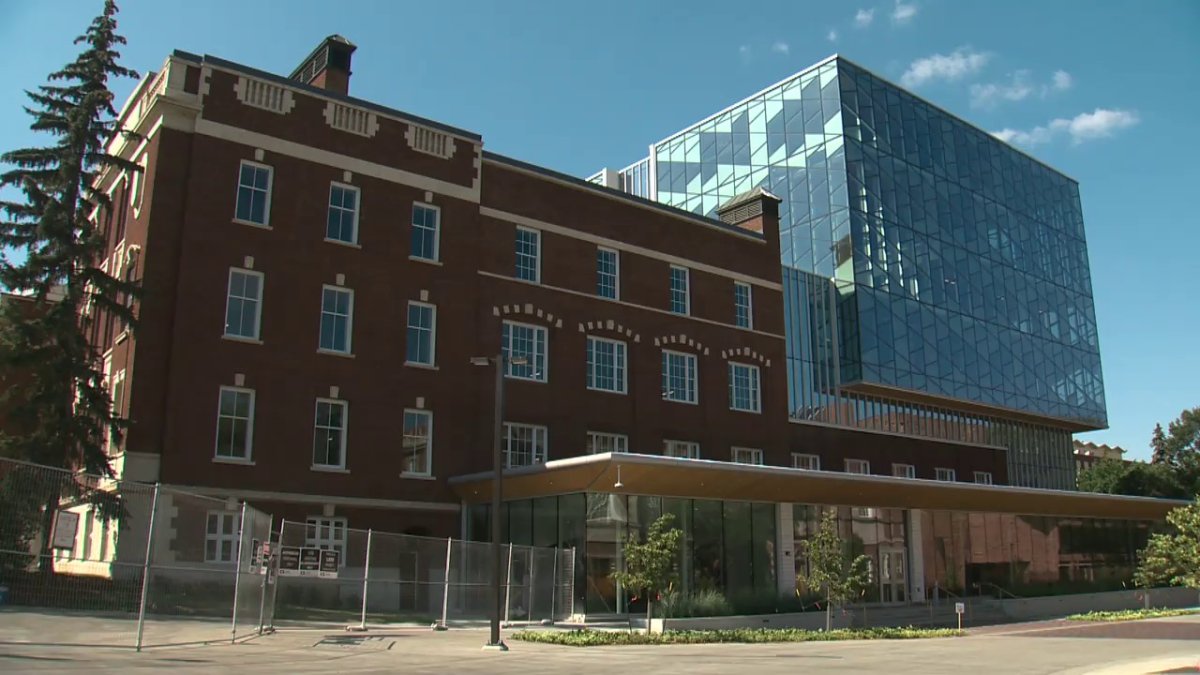Researchers at the University of Alberta are hoping to make a 100-year-old building on campus a lot smarter by reducing energy use, emissions and operating costs.

A project is underway at the University Commons building to create a “living laboratory.” Existing hardware will be upgraded and additional sensors and smart devices will be added in the building.
The goal for the research team is to figure out how to optimize all the control systems in the building to reduce energy use and greenhouse gas emissions, while increasing comfort for those who use the building and saving operational costs.
“We have a much more accurate view of how the building is used, how many occupants there are and what they’re doing,” said Eleni Stroulia, project lead and professor in the department of Computing Science.
Previously the Dentistry/Pharmacy Centre, University Commons is located on the north end of campus. It is under construction to serve as a student services hub with spaces for gathering, events and ceremonies. It will also house several academic and administrative activities.
“We have done a lot of work in this area, research in our labs, and it was sort of a perfect timing of this building,” Stroulia said. “Our department is going to move in this building, and we are the people who do research. So when the opportunity arose, and we knew that we were going to be moving to a new building under construction, we immediately thought it was sort of you know, fate, it was destiny, to bring our research, which is mature, to the real world, to our home.”
Stroulia said while many modern buildings are equipped with “smart” technology, they are typically not fully optimized. She said a building may have motion sensors that turn lights on and off, but the sensors don’t pick up on natural light levels in the space, leading to the lights being turned on at times when artificial light isn’t needed. This leads to wasted energy.

Get daily National news
“The next level of smartness is: let’s have a sensor that tells us how bright the space is. And if there are people, let’s switch the lights on — if it’s not enough, the environmental lighting,” Stroulia said.
“What we need to do is integrate environmental sensing, occupancy analysis, activity analysis, and the more we know about usage, the smarter we are and the more we can save.”
The project will also include an app that people who use the building can download. It will provide real-time feedback to the research team.
“When they’re in the building, the app will know roughly where they are and we’ll be asking them questions: ‘How do you feel right now? What’s the temperature? What’s going on?'” Stroulia said. “This is the ground truth that will tell us whether we’re doing well.”
A computational model — or “digital twin” — of the building, its infrastructure, spaces and devices will be created. All the data collected from the hardware and software will allow the team to refine the real-time virtual model of the building.
“Once the model becomes highly accurate, whatever you do in the model will actually predict phenomena in the real world,” Stroulia explained. “We can use this information to better control the heating, lighting and ventilation systems for the building.”
The team believes the findings from this project could be transferred to other buildings, finding more energy-efficient ways to control lights than the standard motion-sensing methods currently installed in many buildings.
“The improvement of control will be optimized such that we save energy, save greenhouse emissions, improve comfort and hopefully save costs in the operation of the building,” Stroulia said.

The research team is also collaborating with Omid Ardakanian, whose research focuses on optimizing battery usage. A collaboration is also underway with Petr Musilek, whose work involves smart power grids.
Ardakanian said the goal is to save at least 10 per cent of the building’s energy use, while at the same time making people more comfortable in their surroundings.
“Buildings already consume a lot of energy. Around 30 to 40 per cent of the energy is consumed in residential and commercial buildings in Canada, in the U.S. and around the world,” Ardakanian said.
“There is a lot of potential to save energy, make people more comfortable, improve their well-being and health in the building. And that’s exactly what we’re after in this project.”
Other aspects of the project will look into privacy and data use, the heat exchange between the building and the exterior, as well as how occupants can engage more actively with the building.
The university recently received $649,570 in funding from the Canada Foundation for Innovation’s John R. Evans Leader Fund.
The building is slated to open in 2024.
“It’s going to be beautiful and smart. It is going to be communicating our research and it’s going to be making the life of the occupants better, more comfortable and with less impact to our environment,” Stroulia said.








Comments